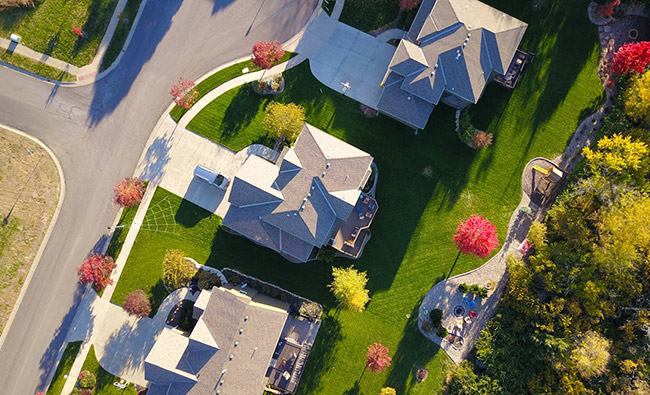
Key Takeaways
- The lifespan of roofs varies based on material and environmental conditions, typically ranging from 15 to 50 years.
- Key factors affecting roof longevity include the quality of materials, installation practices, climate conditions, and regular maintenance.
- Timely identification of damage, leaks, and roof age is crucial for determining when a replacement is necessary to avoid costly repairs.
Roof Lifespan Overview
Roofs are a significant investment, and the lifespan of your roof can vary widely based on the materials used and environmental conditions. Generally, the average lifespan of a roof ranges from 15 to 50 years. However, in regions like Florida, where the climate is harsher, the lifespan tends to be shorter, typically between 15 and 20 years. An ice and water shield underlayment can also significantly extend a roof’s lifespan. The choice of roofing materials and the prevailing climate conditions play crucial roles in determining how long a roof will last, especially in areas with extreme weather, impacting the roof’s life expectancy and the life of your roof.
Different roofing materials offer varying lifespans. Each type comes with its own durability and maintenance requirements.
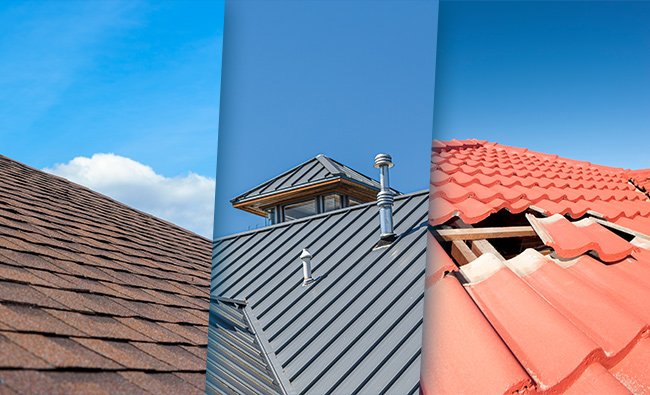
Asphalt Shingle Roofs
Asphalt shingles are a popular roofing material due to their affordability and ease of installation. Also known as composition roofing shingles, the average lifespan of asphalt shingle roofs ranges from 15 to 30 years, depending on various factors. Most asphalt shingles last approximately 20 to 30 years, after which they become more susceptible to damage. Asphalt roofs typically last 15 to 20 years in warmer climates like Florida due to harsher weather conditions. With ongoing maintenance in places like North Carolina, asphalt roofs can last closer to 20 years.
3-tab asphalt shingles, for example, last 15 to 25 years, while dimensional shingles or architectural shingles can last between 25 and 30 years, offering greater durability than standard options.
Despite their decent lifespan, asphalt shingles do not last as long as materials like metal, slate, wood shingles, and clay tiles.
Metal Roofs
Metal roofs are known for their durability and long lifespan. They can last over 50 years with proper care. For instance, the expected lifespan of AG Panel metal roofs is 50-70 years with regular maintenance. In Florida, metal roofs can last over 40 years, even under harsh weather conditions.
A standing seam roof, which is considered a lifetime roofing system, uses a concealed fastener system that contributes significantly to its long lifespan. Regular maintenance ensures metal roofs achieve their maximum lifespan, making them a reliable option for both residential and commercial buildings.
Tile Roofs
Tile roofs, which include clay and concrete tiles, are renowned for their impressive longevity. Clay tile roofs can last 100 years or more with proper care, while concrete tile roofs can last up to 50 years. In Florida, concrete and clay tiles are commonly used for roofing due to their durability and resistance to harsh weather conditions.
However, the roofing structure must support the weight of clay tiles.
Wood Shingles and Shakes
Wood shingles and wood shakes are known for their durability and aesthetics. When treated properly against moisture and pests, their typical lifespan ranges from 20 to 40 years.
Regular inspections and maintenance keep wood shingles and shakes in good condition, ensuring long-lasting protection for your home.
Slate Roofs
Slate roofs are among the most durable roofing options available, with a lifespan that can exceed 100 years. Slate roofs require strong structural support due to their weight to maintain long-term durability.
The longevity and aesthetic appeal of slate roofs make them a preferred choice for those looking for a long-lasting roofing solution.
Flat Roofs
Flat roofs generally last from 10 to 30 years, depending on the materials used and the quality of maintenance. Some types of flat roofs, like spray foam roofs, can last well over 50 years with proper maintenance. Other materials like EPDM can have a lifespan of 20 to 30 years or more.
Regular inspections for drainage problems and proper maintenance are key to maintaining flat roofs’ functionality and longevity.
Key Factors Affecting Roof Longevity
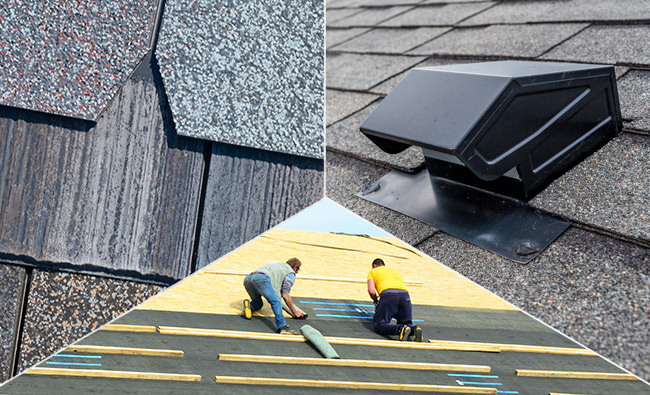
Several key factors play a significant role in determining a roof’s lifespan:
- High-quality roofing materials extend a roof’s lifespan.
- Proper installation maximizes the durability of asphalt shingle roofs.
- Proper attic ventilation prevents moisture accumulation and mold growth, protecting the roof structure.
- During regular maintenance, immediate repairs of broken tiles or shingles protect the roof’s underlying layers and prevent leaks.
Quickly addressing roof issues can save money by avoiding extensive repairs later. Curling shingles often indicate aging or improper installation, reducing the roof’s protective capability. Severe weather can crack shingles, increasing the risk of leaks.
Quality of Roofing Materials
The quality of roofing materials significantly contributes to the overall lifespan of a roof. High-quality roof materials, such as metal, tile, and slate, can last over 50 years, with some even exceeding 100 years. Investing in quality materials reduces the need for frequent repairs or replacements, providing long-term savings.
High-quality, durable material often comes with better warranties, reflecting their durability and the manufacturer’s confidence in their performance.
Installation Quality
Hiring a certified professional roofing contractor ensures proper installation and maximizes durability. Installation quality significantly affects the lifespan of roofing materials; proper installation can extend longevity. High-quality workmanship ensures adequate protection against the elements and provides peace of mind for homeowners.
For instance, improper nailing of shingles can cause future issues and reduce the roof’s lifespan.
Climate and Weather Conditions
Climate and weather conditions greatly impact a roof’s lifespan. In regions like Florida, many factors specifically affect roofing materials:
- High UV rays
- Humidity
- Moisture
- Heavy rains
- Salt spray
Extreme weather conditions like heavy rains during hurricane season, tropical storms, intense sunlight, hail, and heavy winds significantly shorten roofs’ lifespans, increasing the need to replace your roof due to storm damage, replacement, and extreme temperatures.
Maintenance Practices
Regular preventative maintenance is critical for extending roof life expectancy. For instance, wood shingles and shakes last longer when properly treated against moisture and pests. Routine tasks like gutter cleaning and minor repairs significantly extend a roof’s lifespan.
Proper care and preventative measures maintain the integrity and functionality of your roofing system. To ensure a scheduled routine is followed, establish a roof maintenance checklist to help maximize the longevity of your roof life expectancy.
Signs It’s Time for a Roof Replacement
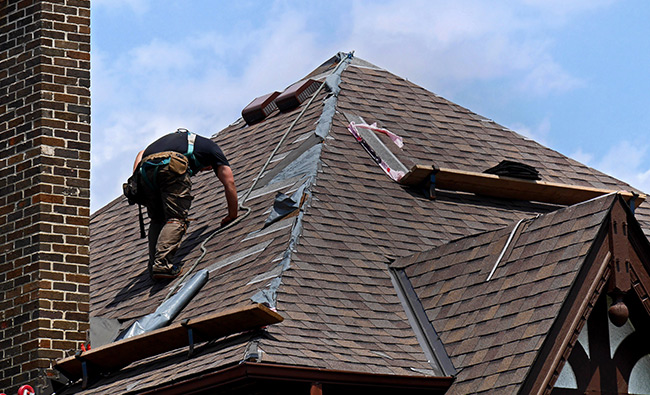
Recognizing when it’s time for a roof replacement is crucial for maintaining your home’s safety and integrity. Visible damage, leaks, and the roof’s age are key indicators that a replacement may be necessary. Curling shingle edges or cupped tabs, bald spots on shingles, and missing granules indicate deterioration and the need for a new roof. If a roof is at least two decades old, it may be nearing the end of its lifespan. Homeowners should contact a professional roofing contractor if they notice signs of roof failure.
Awareness of these warning signs helps you take timely action and avoid costly repairs or interior damage.
Visible Damage
Visible damage is a clear indicator that your roof may need repairs or replacement. Cracked, curled, or missing shingles make your roof vulnerable by exposing the roof to moisture damage, leading to leaks and further deterioration.
Promptly addressing these issues can prevent more severe problems and extend the roof’s lifespan.
Leaks and Water Damage
Leaks are a primary cause of roof failure and can lead to significant internal damage if not addressed. Water stains on ceilings or walls strongly indicate roof leaks that require immediate attention.
Regular inspections and timely repairs mitigate the risk of leaks and extend the roof’s lifespan through proper roof maintenance, ensuring the roof lasts longer.
Age of the Roof
The roof’s age is a critical factor in determining its need for replacement. Depending on maintenance and environmental conditions, asphalt shingle roofs typically last 15-30 years. Other roofing materials, such as metal, tile, wood shingles, and slate, have varying lifespans, ranging from 20 to over 100 years. An asphalt roof can also be a durable option for homeowners.
Homeowners should consider their roof’s age in relation to the expected lifespan of their roofing materials when deciding on replacement for a longer roof life expectancy.
Extending Your Roof’s Life Expectancy
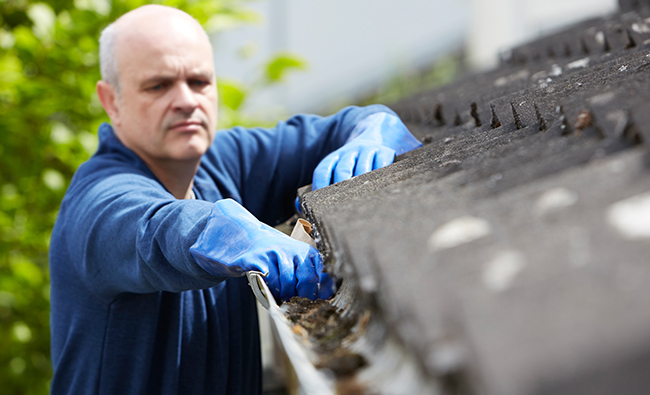
Proactive measures to extend your roof’s life expectancy can save money and ensure your home remains protected. Regular inspections, proper ventilation, and timely repairs are essential for maintaining a long-lasting roof. Routine tasks like gutter cleaning, trimming overhanging branches, and addressing small issues promptly can significantly extend your roof’s lifespan. Hiring a knowledgeable contractor for regular maintenance helps identify and resolve problems before they escalate.
Proactive care and maintenance ensure your roof remains in good condition for many years.
Regular Inspections
Annual professional inspections can identify hidden issues that may lead to larger problems. Early detection of potential problems through regular inspections can reduce repair costs significantly. Inspecting roofs after severe weather events is crucial to catch any potential damage.
Regular roof inspections contribute to the roof’s overall longevity and performance.
Proper Ventilation
Effective attic ventilation is crucial for maintaining a roof’s health by regulating temperature and reducing heat and moisture build-up. Proper ventilation prevents conditions that lead to deterioration, reducing the need for roof replacements and enhancing energy efficiency.
Regular maintenance, including debris removal from the roof at least twice a year, is vital for prolonging roof life.
Timely Repairs
Timely roof repairs prevent minor damages from escalating into significant problems that require costly repairs. Applying a sealant every few years is recommended to extend the life of wood roofs.
Prompt attention to minor damages ensures the roof remains in good condition and extends its lifespan.
Comparing Roof Warranties
Understanding roof warranties is essential for homeowners as they assure the longevity and quality of roofing materials. Warranties usually come in two forms: manufacturer’s warranties and workmanship warranties.
Knowing the differences can help homeowners make informed decisions when selecting roofing materials and contractors.
Manufacturer’s Warranty
A standard manufacturer’s warranty typically offers limited lifetime coverage, mainly protecting against material defects. Many roofing shingles come with a standard warranty that may cover defective materials for the lifetime of the homeowner’s ownership. However, most manufacturer warranties only cover the cost of defective materials, excluding labor for removing and disposing of failed shingles.
The coverage provided by a manufacturer’s warranty may vary significantly based on specific terms defined by each manufacturer.
Workmanship Warranty
A workmanship warranty is important for homeowners as it protects against errors during roof installation. These warranties can vary by contractor, with some reputable options offering coverage for the roof’s lifetime.
A workmanship warranty from your roofing contractor provides added peace of mind and safeguards against installation-related issues, including your roof warranty.
Roof Life Summary
Understanding the lifespan of various roofing materials is crucial for making informed decisions about roof maintenance, repairs, and replacements. While popular for their affordability, asphalt shingles have a shorter lifespan compared to more durable materials like metal, tile, and slate. Key factors affecting roof longevity include the quality of materials, installation, climate, and regular maintenance. Recognizing the signs that it’s time for a roof replacement and taking proactive measures to extend your roof’s life expectancy can save you money and ensure your property remains protected. By comparing roof warranties, homeowners can also make better choices regarding their roofing investments. Taking these steps will help ensure your roof lasts as long as possible, providing safety and security for years to come.
Roof Life Frequently Asked Questions
How long do asphalt shingles typically last?
Asphalt shingles typically last between 15 and 30 years, depending on their quality, climate, and maintenance. Proper care can extend their lifespan significantly.
What factors can affect the lifespan of my roof?
The lifespan of your roof can be affected by the quality of roofing materials, the installation process, prevailing climate and weather conditions, and the frequency of maintenance performed. Ensuring high-quality materials and regular upkeep can significantly enhance its longevity.
How can I extend the life expectancy of my roof?
To extend the life expectancy of your roof, conduct regular inspections, ensure proper ventilation, perform timely repairs, and maintain routine tasks like gutter cleaning. Taking proactive steps to address minor issues will greatly enhance your roof’s longevity.
What are the signs that I need a roof replacement?
If you notice visible damage such as cracked or missing shingles, leaks, or significant water damage, along with the roof’s age being over 20 years, it is likely time for a roof replacement. Taking proactive measures can prevent further issues and ensure your home’s protection.
What is the difference between a manufacturer’s warranty and a workmanship warranty?
The primary difference is that a manufacturer’s warranty covers defects in roofing materials, whereas a workmanship warranty protects against installation errors. Each plays a crucial role in ensuring your roof’s quality and longevity.
(352) 293-2449